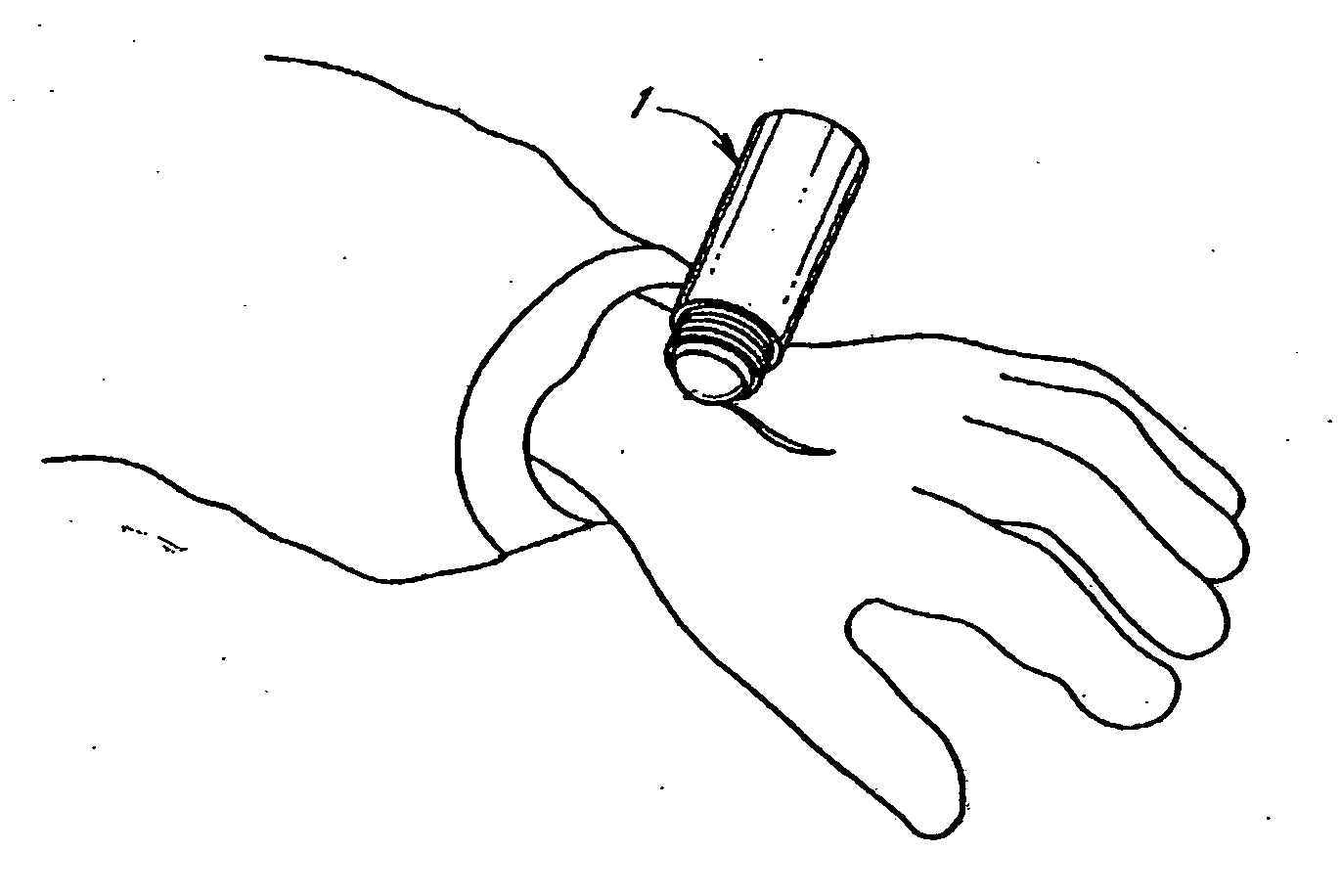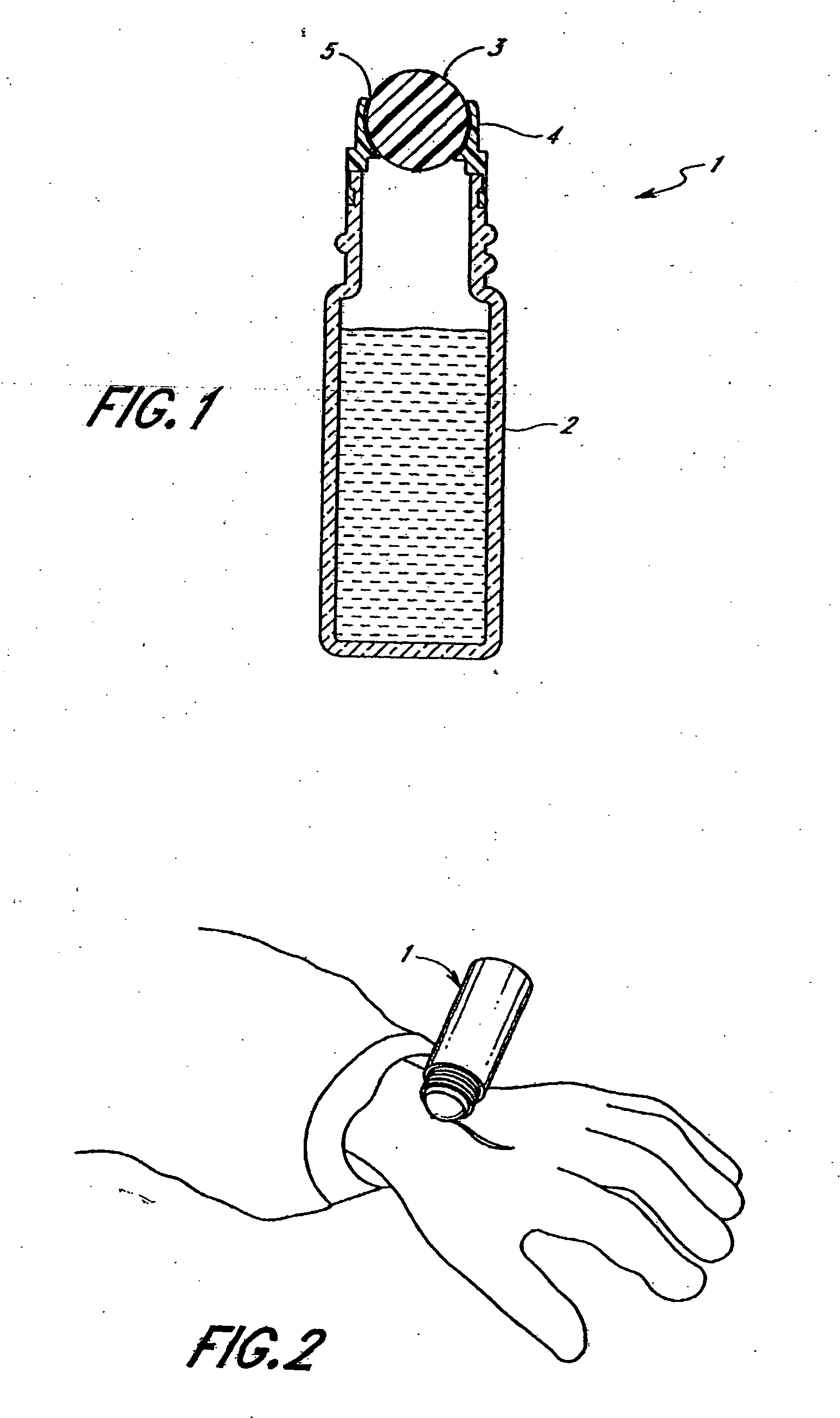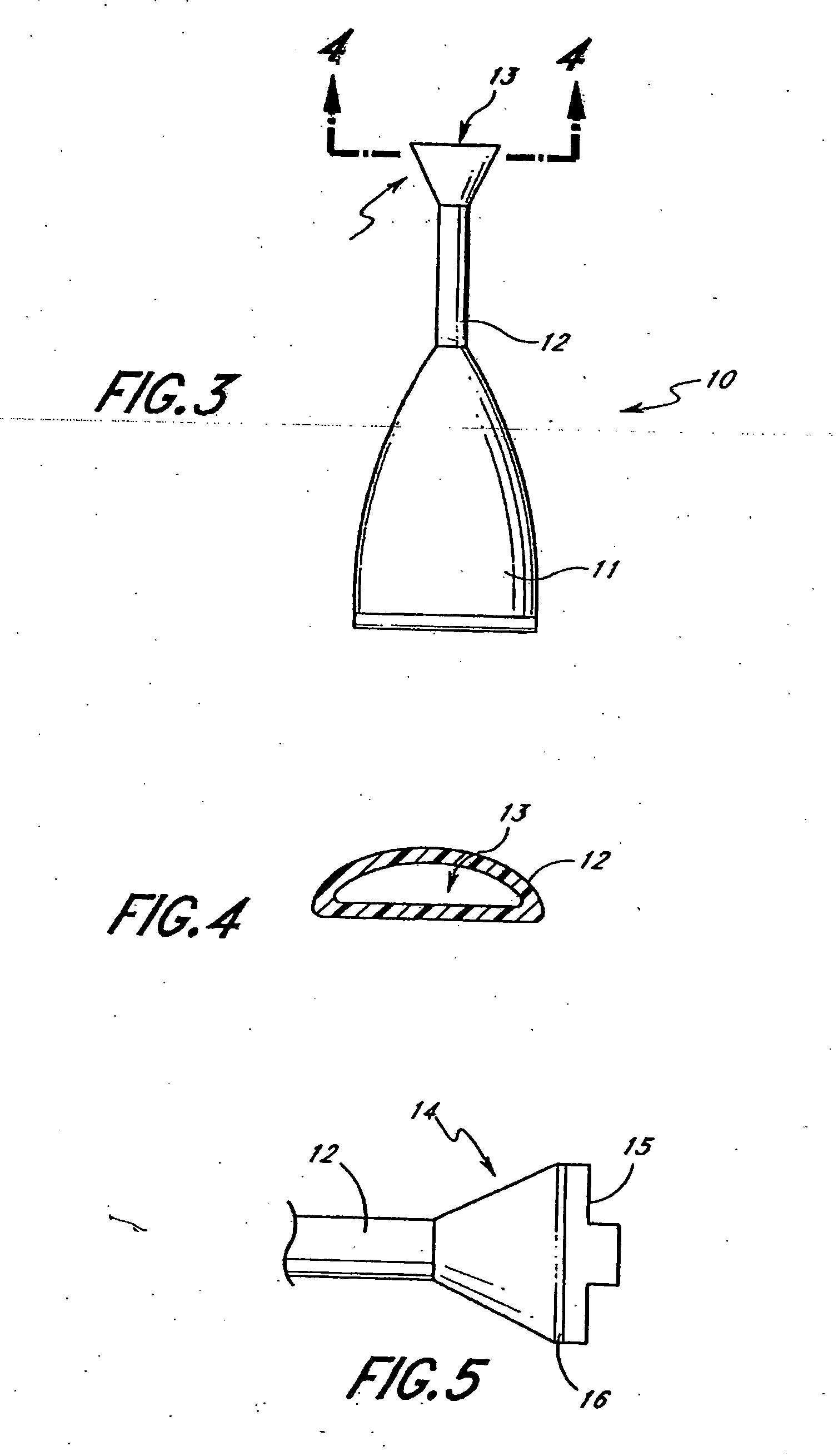Controlled viscosity tissue adhesive
a tissue adhesive, controlled viscosity technology, applied in the field of medical and surgical tissue adhesives, can solve the problems of increasing the distress of an already traumatized patient, reducing the safety of sutures, and reducing the risk of errors, so as to and reduce the risk of infection
- Summary
- Abstract
- Description
- Claims
- Application Information
AI Technical Summary
Benefits of technology
Problems solved by technology
Method used
Image
Examples
Embodiment Construction
[0024] Several considerations come into play when a closing percutaneous opening, such as a wound or incision. The considerations include providing a closure having adequate strength to resist opening or rupture and providing a closure which protects the opening, but does not at the same time substantially interfere with the normal healing processes. One method that can be used is the application of an adhesive. An adhesive can be used either with or without additional closure means.
[0025] When the adhesive used is a liquid, it presents a different set of considerations as compared to solid materials and other conventional methods of closure, such as staples, sutures, and bandages. Several of these considerations have to do with the viscosity of the adhesive.
[0026] In discussing the viscosity of the adhesives in the context of preferred embodiments, the viscosity referred to herein is the viscosity of the adhesive at the time it is being applied. Following application, the adhesiv...
PUM
| Property | Measurement | Unit |
|---|---|---|
| viscosity | aaaaa | aaaaa |
| viscosity | aaaaa | aaaaa |
| viscosity | aaaaa | aaaaa |
Abstract
Description
Claims
Application Information
 Login to View More
Login to View More - R&D
- Intellectual Property
- Life Sciences
- Materials
- Tech Scout
- Unparalleled Data Quality
- Higher Quality Content
- 60% Fewer Hallucinations
Browse by: Latest US Patents, China's latest patents, Technical Efficacy Thesaurus, Application Domain, Technology Topic, Popular Technical Reports.
© 2025 PatSnap. All rights reserved.Legal|Privacy policy|Modern Slavery Act Transparency Statement|Sitemap|About US| Contact US: help@patsnap.com



